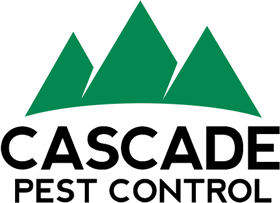Author: Kurt Treftz, Cascade Pest Control
How to Identify and Remove Ground Wasp Nests
While you may be more familiar with wasps nesting in trees or in the nooks and crannies around the outside of your house, there are species that also nest underground. These ground wasps, also called Yellow Jacket wasps, pose just as much a threat to your home and safety, so being educated about their habits and what to do if you discover a nest is key for effective wasp control.
Ground Wasp Characteristics & Habits
The term “ground wasps” does not refer to one single species of wasp, but rather describes a general group who tend to nest in the ground. They usually fall into two categories: solitary ground wasps and social ground wasps.
Solitary ground wasps most notably include great golden digger wasps and eastern cicada killer wasps. Both are between 1-1.5 inches in length and prefer soil to burrow into. They can be found throughout the year, but most often during the summer season, and they typically feed on nectar and honeydew as adults, and larvae are laid in host bugs, like grasshoppers and cicadas in this case, and use their host for food. Solitary wasps are typically less aggressive and not prone to sting unless provoked.
The most popular variety of social ground wasps are yellow jackets. These are a larger danger to humans, as they will sting unprovoked, and their nests can be found in areas with higher foot traffic. Also, their colony is larger and has a queen and entire hive, whereas solitary wasps simply look out for themselves and their larvae. Again, this species is more active during the warmer spring and summer months, as their floral food sources begin to bloom.
Ground Wasp Nest Identification, Removal, & Abatement
Due to the various ways in which these two groups of ground wasps nest and live, their threat level to humans naturally differs. Typically, the social wasps are more dangerous, and the solitary less so, as they congregate in smaller numbers and decrease the number of bugs and insects in the area, but both can be a problem if they nest in high traffic areas, like near walkways or in backyards. It is in these instances and in these areas that wasp control becomes necessary.
Nest sites for either variety of ground wasp are usually in protected places ranging from abandoned animal burrows to debris piles. They will usually create a conical pile of dirt that has a hole in the middle for entrance and exit. Sometimes these nests can be in close proximity to one another, so keeping an eye out for such structures and any wasp activity around them is key for nest identification.
While there are products, such as an insecticidal dust, that can be personally applied to the nest to exterminate the winged-residents, the application process can be quite dangerous. You would need to have access to proper protective gear and be very speedy in your retreat post-dosing.
In these respects, it’s usually the safest bet to bring in a professional pest control company. Luckily for you, Cascade offers not only wasp control services, but a variety of professional and comprehensive services to ensure your home is safe (and wasp free)! Our technicians have certification and extensive training on safe and eco-friendly removal methods, and can provide tips and follow-up service to prevent future nest formation.
Call 888-989-8979 to get started with Cascade Pest Control’s expert services for your home or business’ wasp control needs!
